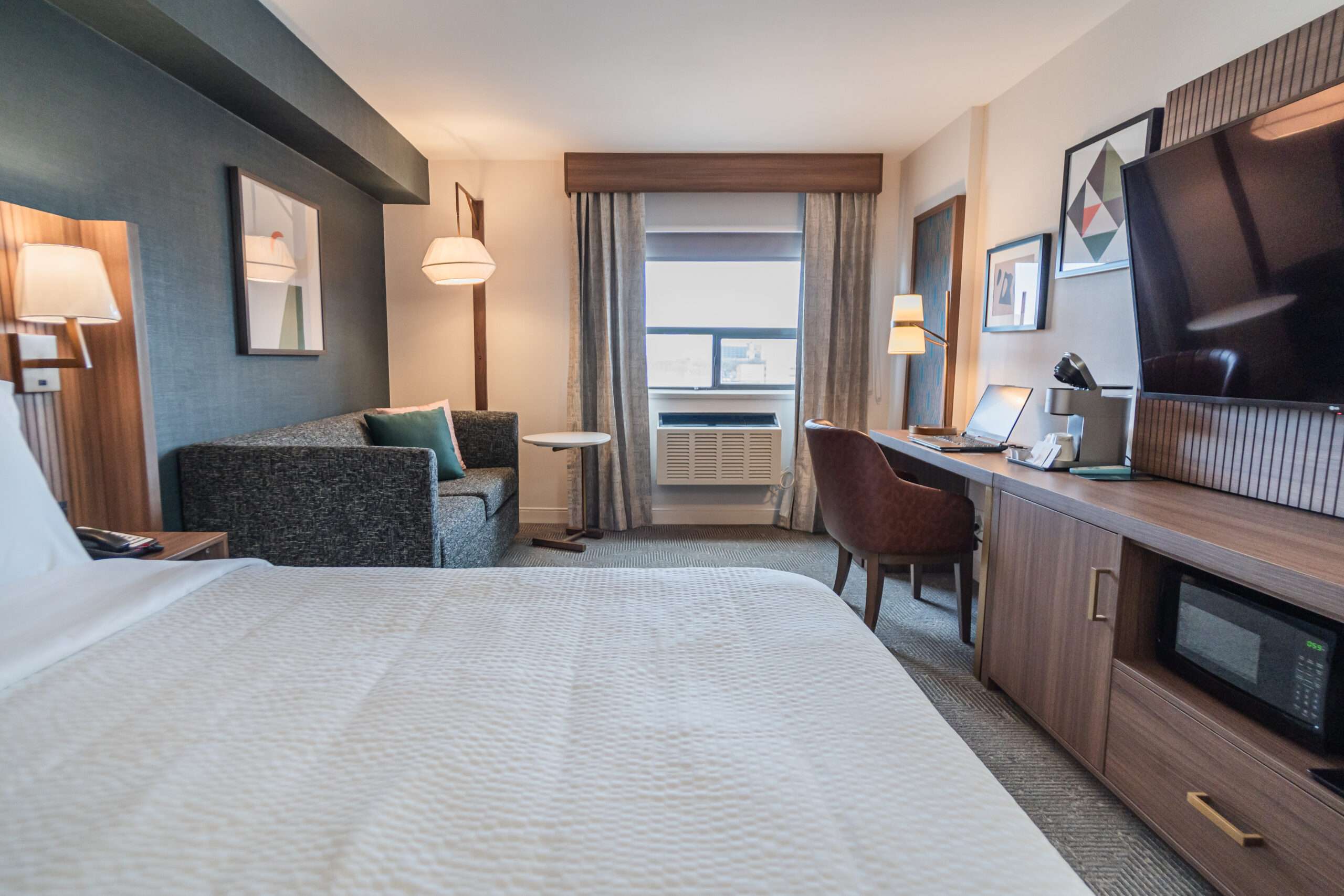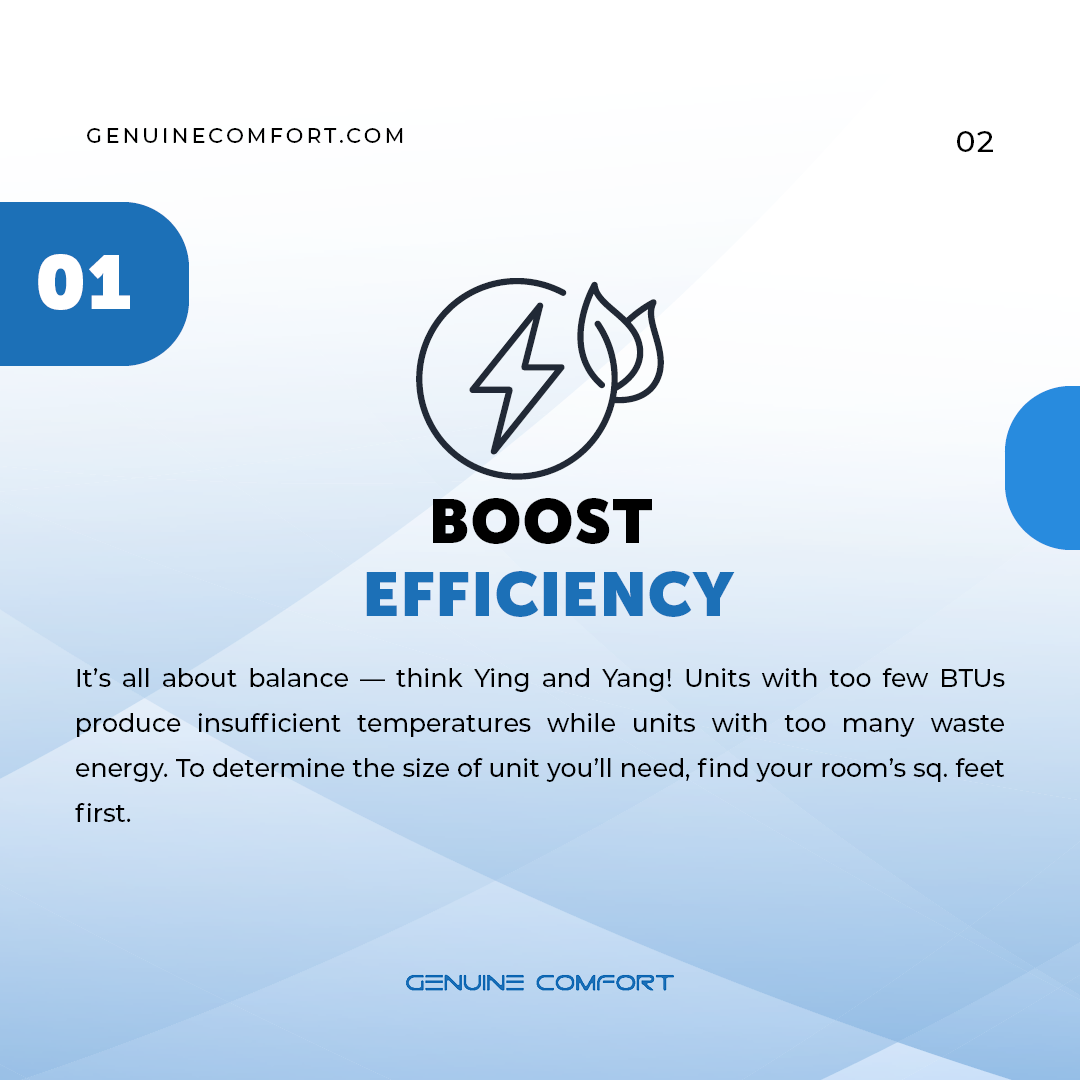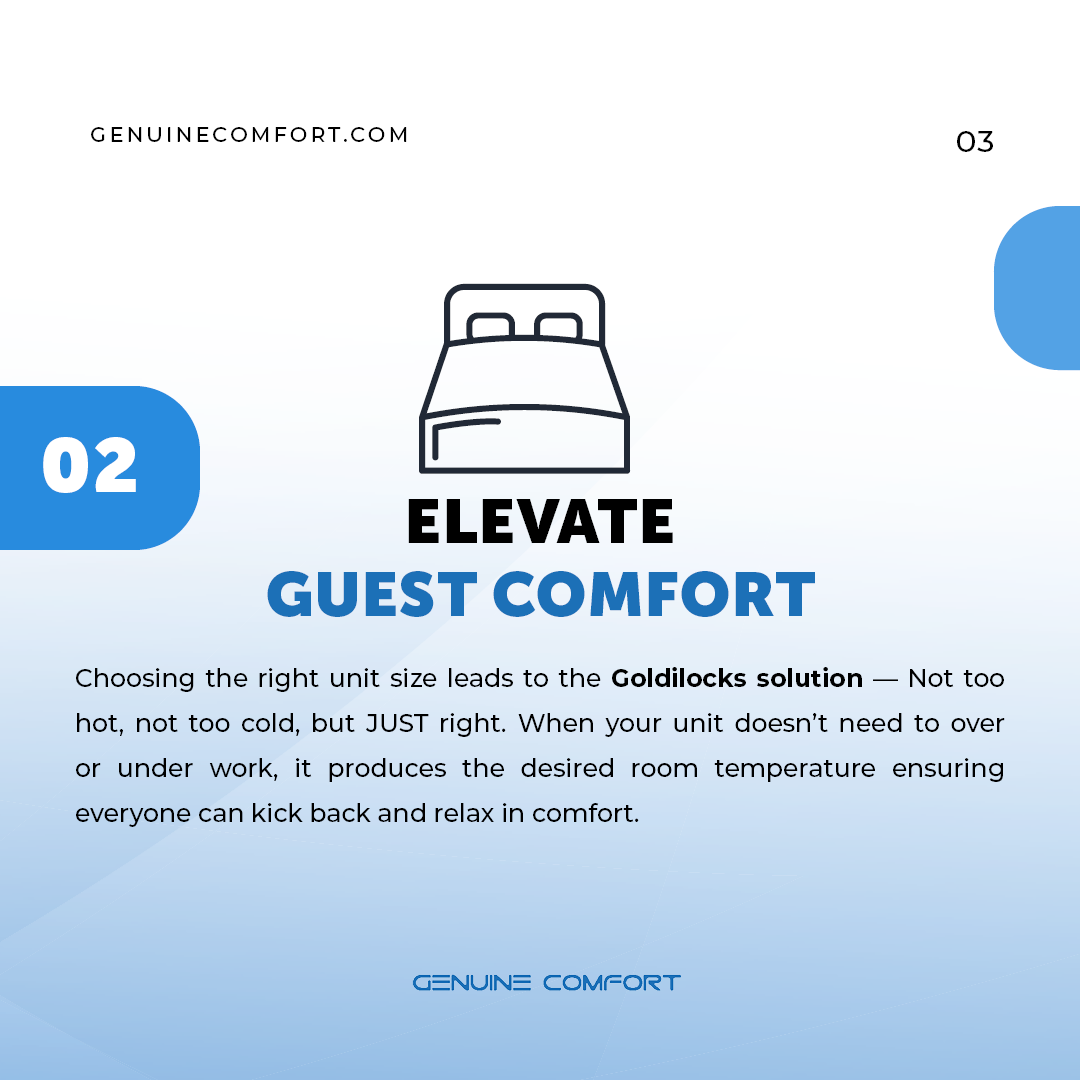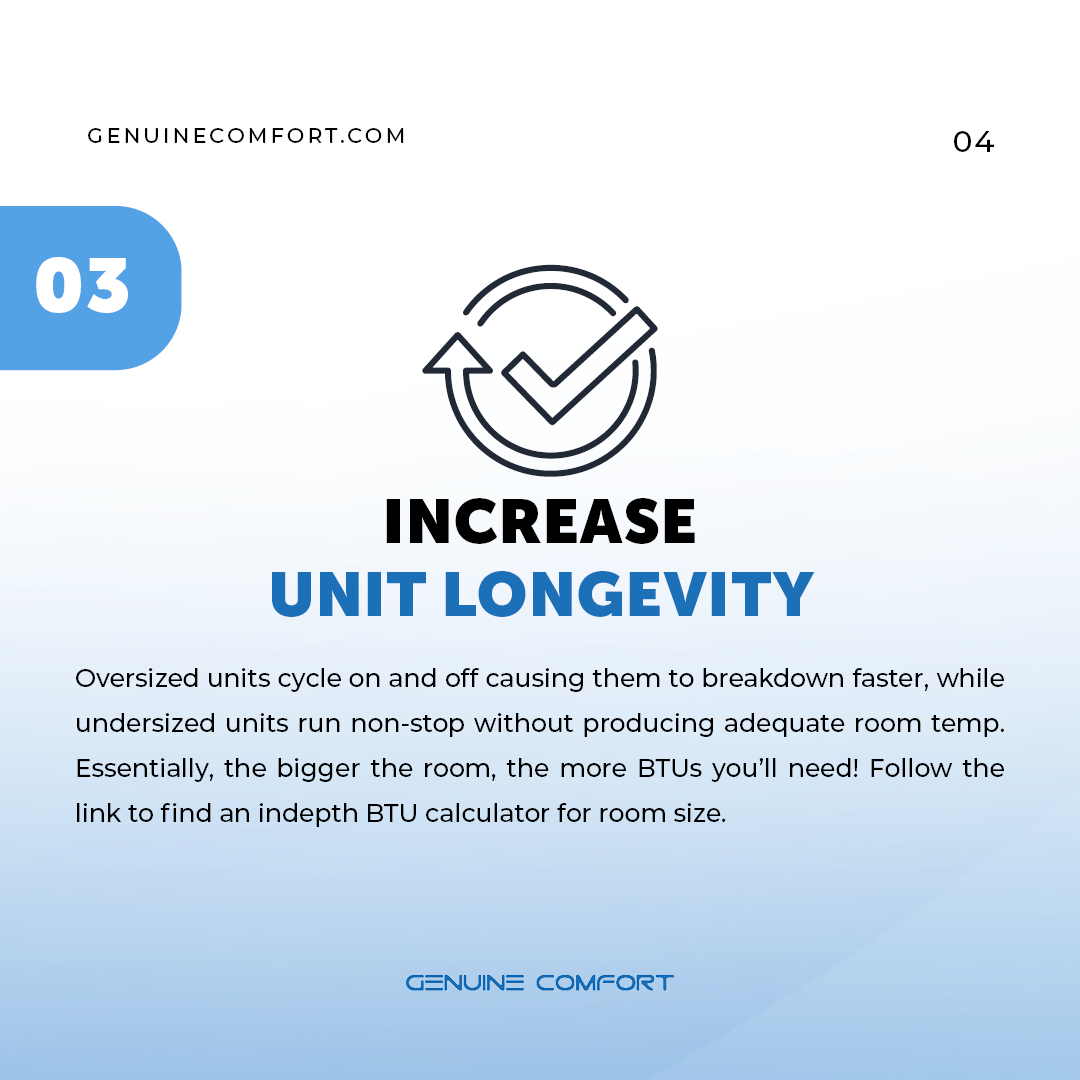
Summary
Size matters — yeah we said it! When it comes to choosing the right PTAC, VTAC, or AC unit for your building’s suite it’s important to take into account your room size.
Today, we’re diving deep into the world of PTACs, ACs, and VTACs – and we’re leaving the jargon at the door. Whether you’re a hotel owner, a contractor, or just someone who likes to stay cozy, the size of your space matters more than you might think when it comes to your PTAC.
Grab a seat, kick back, and discover how room size plays a pivotal role in the selection of your building’s next PTAC, VTAC, or AC unit.
Does Room Size Matter?
Yes — here's 3 reasons why
Boost Efficiency
Elevate Comfort
Increase Longevity
1. Boost Unit Efficiency
Efficiency begins with understanding the relationship between room size and BTUs (British Thermal Units). BTUs measure the amount of heat a unit can remove from a room per hour. Choosing a unit with too few BTUs for a large room results in insufficient cooling or heating, while a unit with too many BTUs for a small room wastes energy and cycles on and off frequently. By matching the unit’s BTU output to the room’s square footage, you ensure optimal efficiency, keeping energy consumption in check and maintaining consistent temperatures throughout the space.
2. Elevate Guest Comfort
Choosing the right unit size leads to the Goldilocks solution — Not too hot, not too cold, but JUST right. Because the unit doesn’t need to over or under work, it produces the desired room temperature ensuring everyone can kick back and relax in comfort.
3. Promote Unit Longevity
When you choose the correct size PTAC, VTAC, or AC unit you increase its overall longevity. Oversized units cycle on and off causing faster wear out, whereas undersized run non-stop, but won’t produce the desired temperature.




How To: Estimate The Right Size Unit
Get a rough idea of the size of unit you’ll need for your suites
Measure Room Size
Find the sq. feet of a room by multiplying its length by its width
Calculate Room Volume
Multiply area by the height of the room to find volume
Monitor Heat Loss & Gain
Consider insulation levels, windows, doors, climate conditions, occupency and equipment
Calculate BTUs
Heat loss and gain is converted into BTUs
BTU Estimate Chart*
Below is a rough estimation of the cooling capacity needed to cool a room based on square feet provided by EnergyStar.gov*
- 150 – 250 sq. feet: 6,000 BTUs
- 250 – 300 sq. feet: 7,000 BTUs
- 300 – 350 sq. feet: 8,000 BTUs
- 350 – 400 sq. feet: 9,000 BTUs
- 400 – 450 sq. feet: 10,000 BTUs
- 450 – 550 sq. feet: 12,000 BTUs
- 550 – 700 sq. feet: 14,000 BTUs
- 700 – 1000 sq. feet: 18,000 BTUs
- 1000 – 1200 sq. feet: 21,000 BTUs
- 1200 – 1400 sq. feet: 23,000 BTUs
- 1400 – 1500 sq. feet: 24,000 BTUs
- 1500 – 2000 sq. feet: 30,000 BTUs
- 2000 – 2500 sq feet: 34,000 BTUs
What Does BTU Mean?
BTU stands for British Thermal Unit. It’s basically a way to measure how much heat a PTAC, VTAC, or AC can produce or remove. In technical terms, it represents the amount of heat energy required to raise or lower the temperature of one pound of water by one degree Fahrenheit.
Think of it like the power of your unit – the higher the BTU rating, the better it can cool or heat your room. It’s like the horsepower of your car engine – the higher the number, the more oomph it has to keep your space comfortable.
Conclusion
In conclusion, when it comes to PTACs, ACs, and VTACs, size matters more than you might think. By taking into account room size, BTU requirements, and HVAC capacity, you can ensure optimal efficiency, comfort, and durability. So, before you embark on your next unit replacement or installation project, remember the importance of right-sizing – your guests, your budget, and your units will thank you for it.